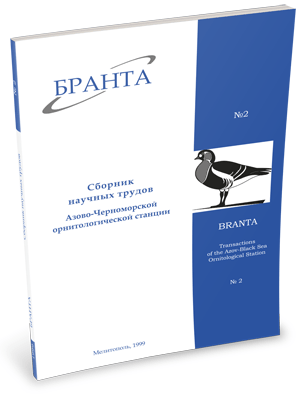
Transactions
of the Azov-Black Sea Ornithological Station



Levant Sparrowhawk in the former Soviet Union. Report 2. Biology and conservation perspectives
Belik V.P. Vetrov V.V.
Continuation of the article contains an analysis of data from zoological collections, published and original materials on seasonal migrations, reproduction, moult and diet of Levant Sparrowhawk in the countries of CIS (mostly Russia and Ukraine). In the South Levant Sparrowhawk arrive to nesting places in the early April, while in the north arrival takes place up to the mid-May. Peak arrival is observed in the end of April – early May. Autumn departure lingers from the mid-August to the beginning of October, with the peak passage in the second half of September. Levant Sparrowhawks are rather site-faithful, but birds build nest anew annually. Very rarely it occupies old nests of other birds. It usually breeds on deciduous trees in flood-lands or arenicolus forests, clutch size varies from 1 to 5 eggs, with an average (n=44) of 3.6 eggs. Clutches of 4 eggs prevail (68.2 %). Average brood-size (n=43) is 3.3 fledglings, generally ranging from 1 to 4. Diet consists of lizards, at paces of fledglings, small rodent and insects (dragonfly, grasshoppers).
Read the paper in a PDF file